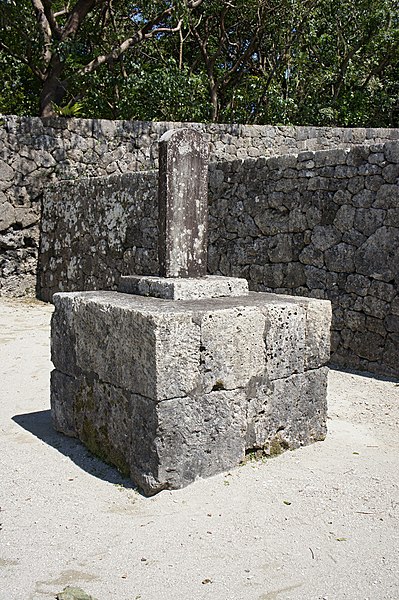Bingata is a traditional stencilled resist dyeing technique originating in Okinawa Prefecture. Bingata typically features a busy pattern of repeating nature motifs such as fish, flowers and fauna in a number of bright colours. Bingata is worn during traditional Ryukyuan festivals and traditional arts performances.
Bingata fabric
19th century ramie Ryukyuan dress showing bingata-dyed design of bamboo, cranes and plum blossoms
A bingata kobo, or manufacturing facility
The Okinawan language or Central Okinawan is a Northern Ryukyuan language spoken primarily in the southern half of the island of Okinawa, as well as in the surrounding islands of Kerama, Kumejima, Tonaki, Aguni and a number of smaller peripheral islands. Central Okinawan distinguishes itself from the speech of Northern Okinawa, which is classified independently as the Kunigami language. Both languages are listed by UNESCO as endangered.
Sign in Okinawa Uno (a colonia in Bolivia), in Spanish and Okinawan: the text reads めんそ〜れ オキナワへ, Menso~re Okinawa-e.
The Tamaoton no Hinomon (玉陵の碑文), referred to as the Tamaudun no Hinomon in modern Japanese, is the oldest known inscription of Okinawan using both hiragana and kanji.





